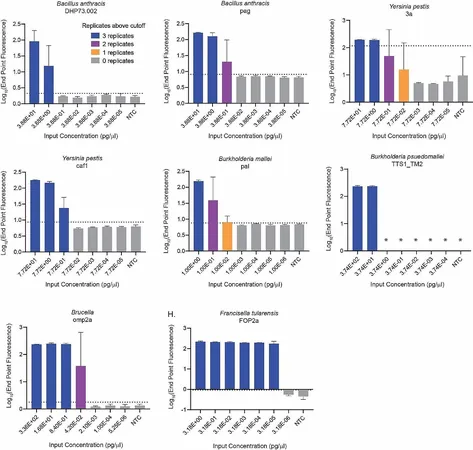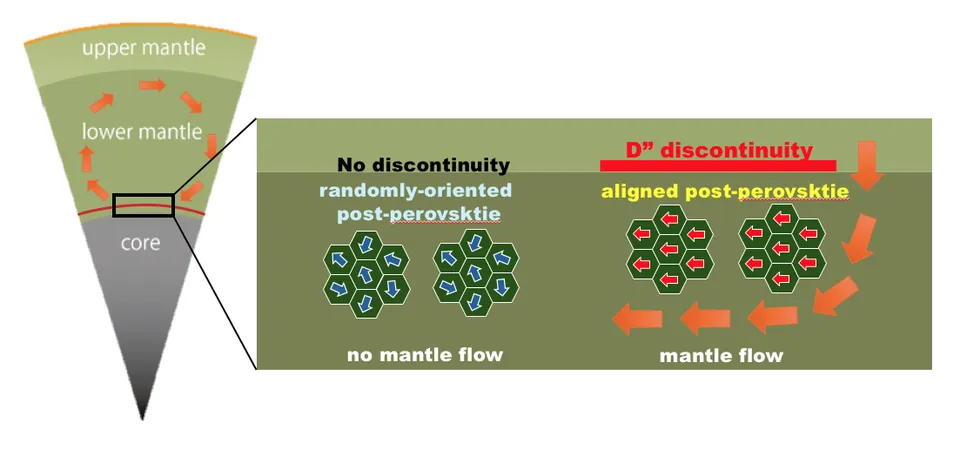
Breakthrough in Rapid Bacterial Detection: LAMP Technology Revolutionizes Diagnosing Biological Threats
2025-01-14
Author: Siti
In a groundbreaking advancement for public health and pathogen detection, researchers have optimized Loop-mediated Isothermal Amplification (LAMP) technology for the rapid identification of dangerous bacterial pathogens in field settings. This innovative approach is particularly crucial for detecting bacterial select agents, including the notorious Bacillus anthracis, Francisella tularensis, Yersinia pestis, and Brucella species, responsible for some of the deadliest infectious diseases.
The Need for Speed: Point-of-Need Diagnostics
Point-of-need diagnostics are designed to provide immediate testing capabilities without the delays associated with traditional laboratory-based methods. These technologies not only reduce the time it takes to diagnose diseases but also minimize logistical challenges, such as sample transport and travel, especially in hard-to-reach areas.
How LAMP Works: A Brief Overview
LAMP technology stands out from traditional PCR methods due to its minimal requirement for elaborate instrumentation, allowing for easier implementation in less-than-ideal environments. The innovative process uses a set of specially designed primers that can amplify target DNA in just 30 minutes, with positive results visible as quickly as 5 to 10 minutes after the test begins. This is significantly faster than standard PCR, which typically takes about 60 minutes.
Groundbreaking Results: Sensitivity and Specificity
The recent study detailed the development and validation of nine LAMP assays, achieving high levels of sensitivity and specificity for bacterial select agents. Remarkably, every assay demonstrated 100% specificity, detecting the target pathogens without false positives, except for Yersinia pestis’ Caf1, which showed 90% inclusivity across its strains. This finding highlights the high performance of LAMP assays—crucial when every minute counts in an outbreak situation.
The Importance of Rapid Detection in Public Health
Pathogens like B. anthracis, F. tularensis, and Y. pestis are classified as serious threats by the Centers for Disease Control and Prevention (CDC). Early detection is critical for initiating containment measures, preventing widespread outbreaks, and ensuring public safety. The capability to conduct rapid tests in remote locations could substantially bolster bio-surveillance and response efforts.
Future Directions: Enhancing Field-Testing Capabilities
While the initial results are promising, researchers are focusing on further improving LAMP test implementations by integrating point-of-need sample processing methods. This includes addressing challenges posed by sample matrices—such as whole blood or soil—that may interfere with testing. By overcoming these hurdles, LAMP technology could be fully harnessed for clinical and environmental testing in real-world, field-forward scenarios.
In conclusion, the optimization of LAMP assays represents a significant leap forward in the rapid identification of biological select agents. As this technology evolves, it has the potential to transform public health responses to infectious diseases, foster a quicker reaction to outbreaks, and ultimately save lives. Don't miss the chance to stay updated on revolutionary healthcare advancements!



 Brasil (PT)
Brasil (PT)
 Canada (EN)
Canada (EN)
 Chile (ES)
Chile (ES)
 Česko (CS)
Česko (CS)
 대한민국 (KO)
대한민국 (KO)
 España (ES)
España (ES)
 France (FR)
France (FR)
 Hong Kong (EN)
Hong Kong (EN)
 Italia (IT)
Italia (IT)
 日本 (JA)
日本 (JA)
 Magyarország (HU)
Magyarország (HU)
 Norge (NO)
Norge (NO)
 Polska (PL)
Polska (PL)
 Schweiz (DE)
Schweiz (DE)
 Singapore (EN)
Singapore (EN)
 Sverige (SV)
Sverige (SV)
 Suomi (FI)
Suomi (FI)
 Türkiye (TR)
Türkiye (TR)
 الإمارات العربية المتحدة (AR)
الإمارات العربية المتحدة (AR)